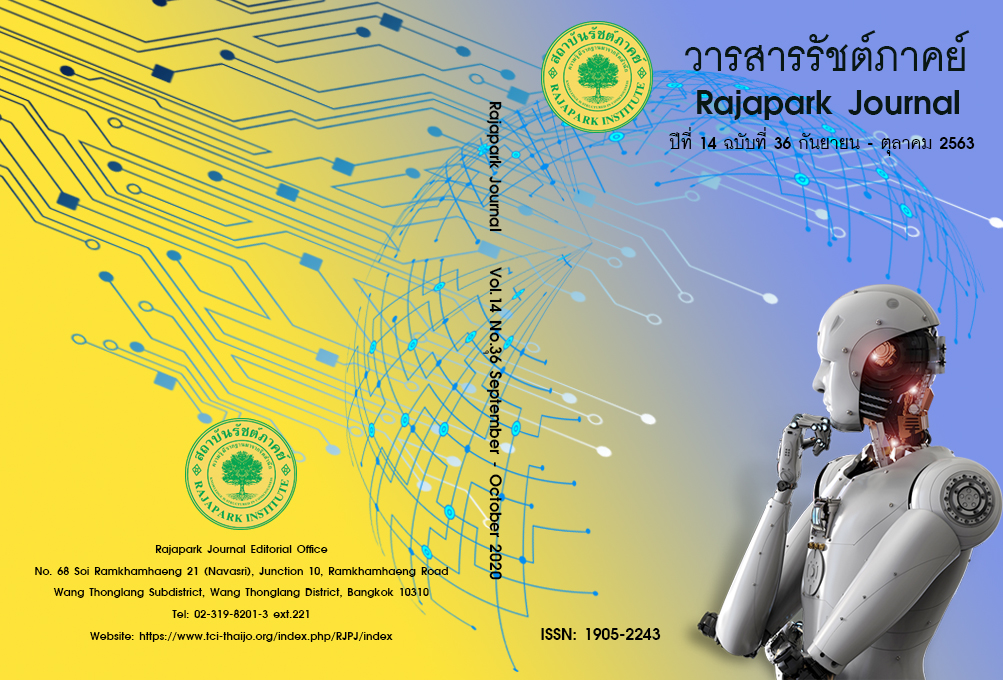The Development of Economics Local Community of Sufficiency Economics Model in Chainat Province
Main Article Content
Abstract
This research aims to study the development of factors as well as The Development of economics local community of sufficiency economics model in Chainat province is qualitative research by using structured interviews is a tool that is examined by experts check to find that it meets the criteria that meet the objectives. And have a small group meeting. 30 key informants, including representatives from all 3 community economic groups, are involved in promoting/supporting both public and private sectors. Use a random sampling method analyze and present descriptive results. The research found that 1) The three model sufficiency economy local community in Chainat province has different operations but have similar objectives in terms of the need for a successful and sustainable community economic development. 2) Factors influencing economic development The community of this local community consists of 8 factors and discover that the heavier problem is that people do not have land to make their own living. (Must be hired outside the home) 3) Guidelines found and lead to success and sustainability by applying 8 factors to be applied especially marketing, there should be a way to publicize information for members and the general public to get information in the community as well. Using local newspapers or websites to develop.
Article Details
Views and opinions appearing in the Journal it is the responsibility of the author of the article, and does not constitute the view and responsibility of the editorial team.
References
Jaikla, S. (2018). The Model of Development and Promotion for Sustainability of Social Enterprises in Thailand. Journal of MCU Nakhondhat, 5(2), 342-363.
Khantachai, N. (1984). Concepts and theories in national development and rural development in community administration and development. Bangkok: Odeon Store.
Kotayan, J., & Somsopon, W. (2011) Sufficiency Economy Village Development Success “Yu Yen Pen Suk”. Local Administration Journal, 4(3), 63-73.
Nimphanich, J. (2007). Qualitative research in political science and public administration. Bangkok: Chulalongkorn University Press.
Office of the National Economic and Social Development Board. (2005). Annual Report 2005. Bangkok: Author.
Palakrai, W. (2007). Factors contributing to the success of Sufficiency Economy Village: A Case Study of Baan Tamnai, Muang Sam Sip Sub-district, Muang Sam Sip District, Ubon Ratchathani Province. Master of Arts Thesis in Social Sciences for Development. Ubon Ratchathani Rajabhat University.
Sriwichailampan, T. (2009). Community Economic Development. Retrieved January 15, 2013, from
www.econ.cmu.ac.th/teacher/thanes/files/ Book2012.pdf
Supapong, S. (1998). Sufficiency Economy The salvation of Thai society. Bangkok: Thammasat University.
Techaatik, S. (2002). Documentation for the academic discussion on "Local Community Economic Research: Northern Region." Research for the Strengthening of Communities. At Faculty of Humanities and Social Sciences, Naresuan University, July 4, 2002.
Wasi, P. (1994). Sufficiency Economy and Civil Society Ways to revive the social economy. Bangkok: Pimdee.
Weerasumrit, S. (2018). People’s Perception and Application of The Principles of Sufficiency Economy Philosophy in Banglane Subdistrict, Bangyai District, Nontaburi Province. Rajapark Journal, 12(26), 385-397.


